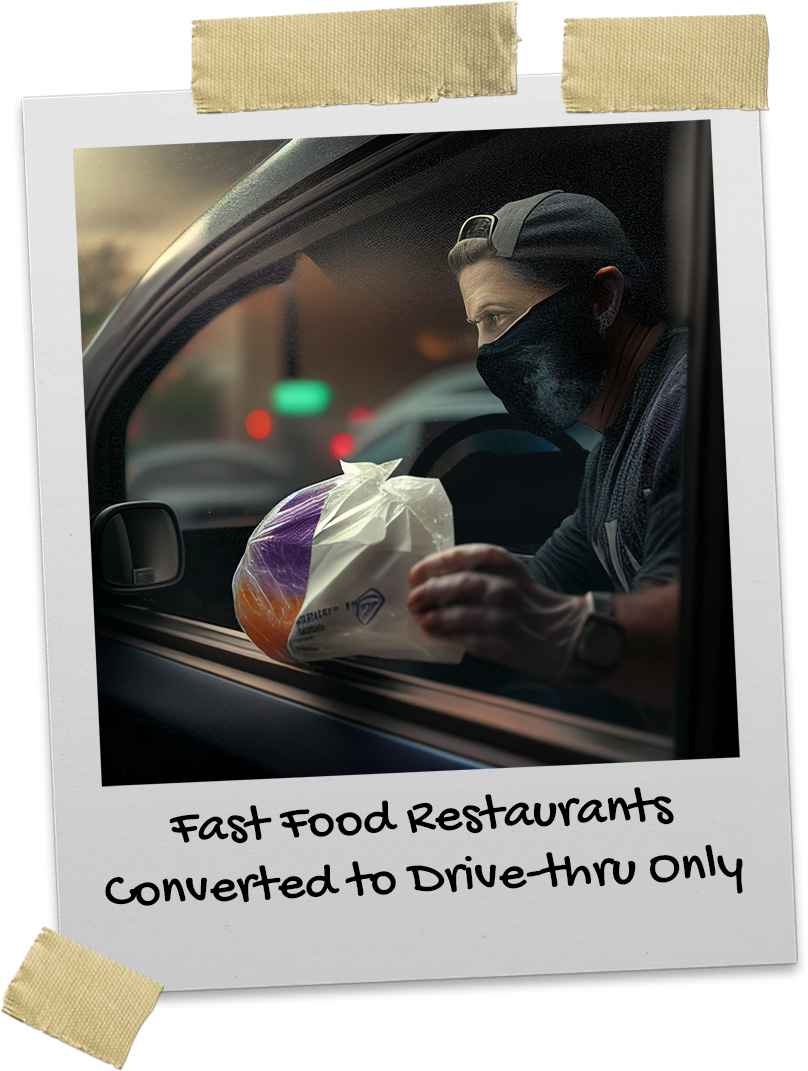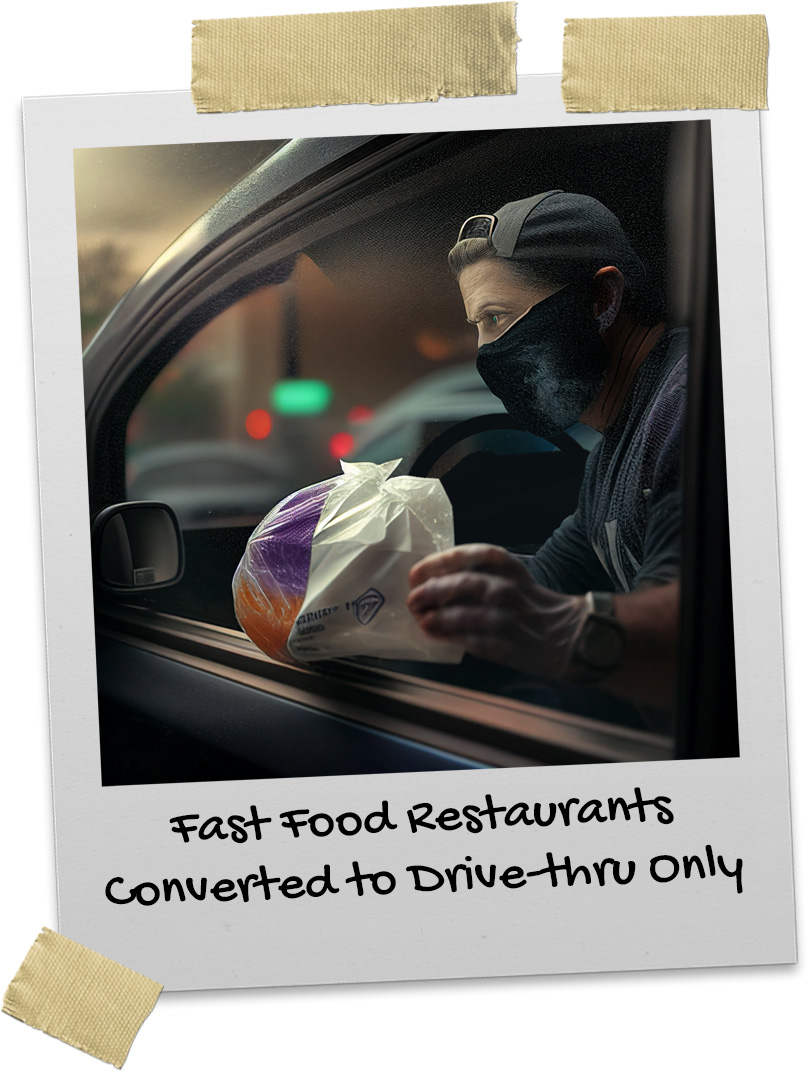Fast Food Restaurants Converted to Drive-thru Only


In the early days of the COVID-19 pandemic, fast food restaurants were faced with a difficult decision: how to continue serving customers while keeping everyone safe. Many chains decided to switch to drive-thru only service, a move that allowed them to maintain social distancing and minimize contact between employees and customers.
They limited contact by adding plexiglass barriers to their drive-thru windows, adopted wireless credit card readers with handles that they could extend out the window for customers to use themselves, and avoided hand-to-hand contact by passing food to customers in plastic tubs.
In March of 2020, the fast-food industry earned $8.3 billion in sales from drive-thrus, which was higher than the $8 billion in sales during the same period in 2019. Drive-thru sales accounted for approximately 70% of fast-food sales each month in May of 2020, according to the New York Times.
Drive-thrus were crucial lifelines for fast-food chains during the pandemic. Restaurants without drive-thrus had to shut down while others switched to a strictly drive-thru or curbside pickup model. Over 1,500 locations of chain restaurants, most of which lacked drive-thrus, were permanently closed due to the pandemic.
Quick service restaurants like Chipotle and Jimmy John’s pivoted to a pickup only model. Customers used the apps to order their food, and then drove to the location to pick it up. In the dining room, all the tables and booths were taped off, and there were several racks of shelves, with bags of food waiting to be picked up, labeled with the customer’s name, sorted by order time.
It was easy to imagine a future where these restaurants eliminated the indoor seating area altogether, and with it the expense of cleaning and maintaining the dining room and the bathrooms.



